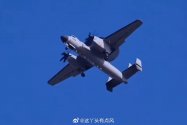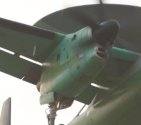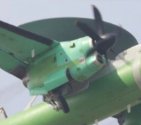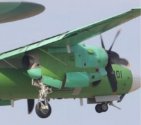You are using an out of date browser. It may not display this or other websites correctly.
You should upgrade or use an alternative browser.
You should upgrade or use an alternative browser.
KJ-600 carrierborne AEWC thread & possible KY-600 (?) COD aircraft
- Thread starter Blitzo
- Start date
Don't know if anyone posted this picture before and thanks to the original poster.
View attachment 134132
An old one already posted in March
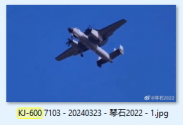
Crossposting from the J-15 thread:


Look like they have applied some area ruling or it's just shadow playing on the fuselage ?Crossposting from the J-15 thread:
View attachment 134339
Self-explanatory.

EDIT/PS: Taken at XAC / Xi'an-Yanliang most likely pre-June 2023
Last edited:
by78
General
An academic paper on the cooling of turboprops for what could only be the KJ-600. Of minor interest, the paper notes the length of the airframe is 17.555m.






Numerical Study on Exhaust Ejection and Nacelle Cooling of Turboprop Engine
Abstract: A simulation physical model was constructed for the integrated engine nacelle of a turboprop aircraft, focusing on the exhaust system/short nacelle. The model incorporated the wing, fuselage, and propeller components. The slipstream of the propeller was simulated using the multiple reference frames (MRF) method, and the flow and heat transfer characteristics inside the engine nacelle were investigated for different exhaust pipe lengths. The results show that: within the scope of the parameters studied in this article. As the length of the mixing tube segment increases from 28 mm to 196 mm. Under the condition of no slipstream, the injection flow rate of the annular seam at the middle of exhaust nozzle increases by 18.3%, and the injection flow rate of the annular seam at the end of exhaust nozzle increases by 0.27 kg/s. Under the condition of slipstream, the injection flow rate of the middle annular seam remains around 0. 174 kg/s, while the injection flow rate of the end annular seam increases by 35. 8%. The change in length of the mixed pipe section has a significant impact on the injection of the end annular seam. The exhaust nozzle outer wall temperature distribution is asymmetric. The average temperature decreases by 15K, 4%. The mixing tube is slightly increased in wall temperature due to the influence of the outlet reflux zone and high-temperature exhaust gas.






This could be the most accurate length disclosure of KJ-600. 17.555m, taking notes.An academic paper on the cooling of turboprops for what could only be the KJ-600. Of minor interest, the paper notes the length of the airframe is 17.555m.
Meanwhile, E-2C on wiki says 17.596 m.

